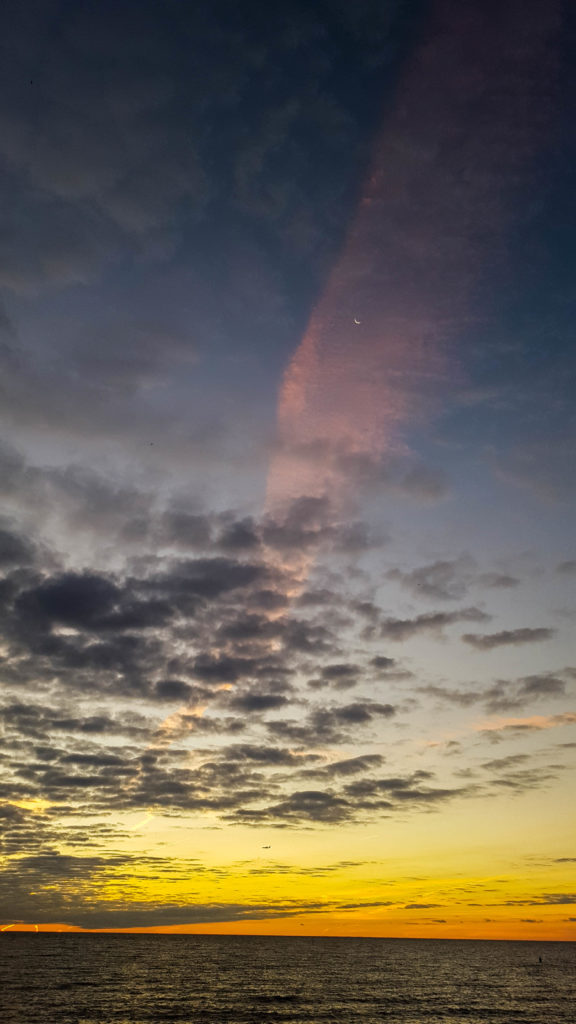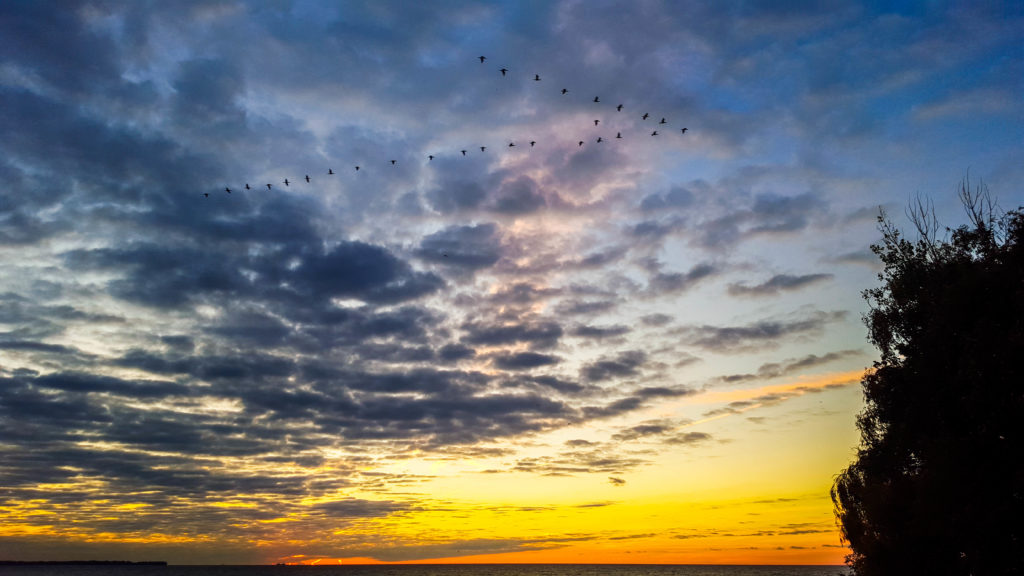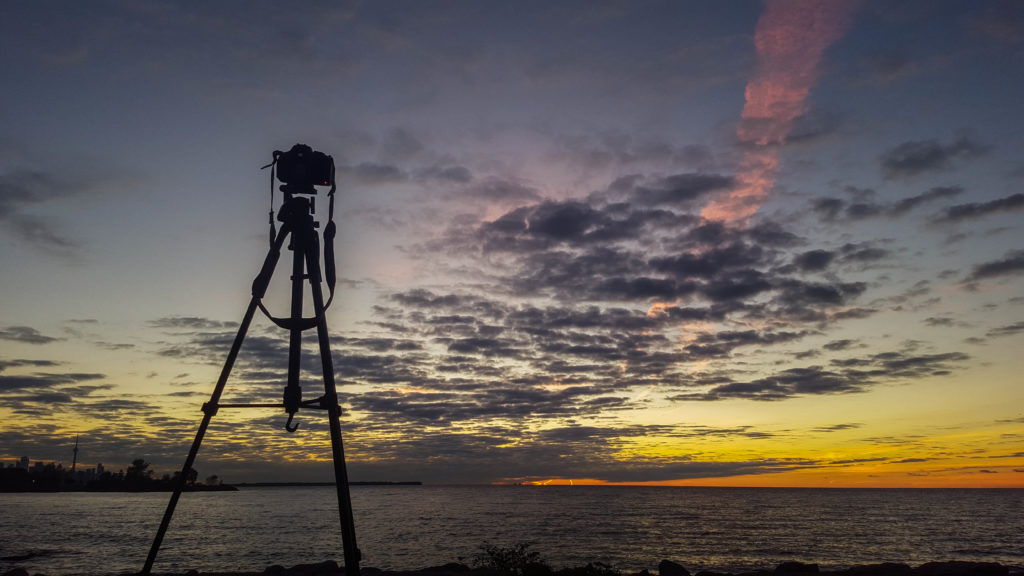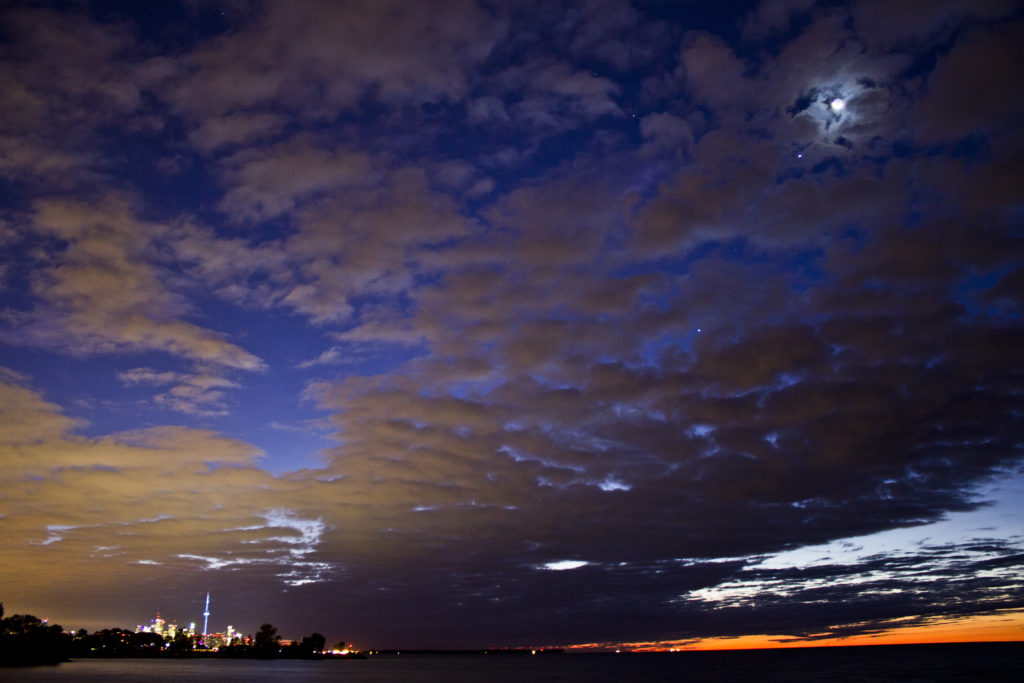I’m addicted. I love astrophotography. I find myself spending a lot of time working no the photos, being outside trying to get the perfect shot, learning how to use my camera and other equipment, and putting together a wish list of equipment that will let me do even more! I went outside before sunrise yesterday and managed to snap an hour’s worth of images, adding to an hour from the night before, where I attempted some star trails over the city of Toronto. All I’ve done so far today is play with the photos and learn to make them look pretty. For the star trail shot, I ended up with 30 exposures at ISO 100, each lasting a minute.

The shot above shows a single RAW exposure. The city lights give the sky a brownish-yellow tinge, which I switched to a cooler blue colour. I also fixed the overexposed down town core, and removed a few dozen satellite and plane trails. Planes suck.

The above shows the final product. The cluster of bright blue trails at the right side of the image is from the pleiades, also visible in the unprocessed image. This is my first composite star trail shot, using many short exposures as opposed to one big long one, and I am very proud of it. I’m a perfectionist though, so I would have been happier if the city was a bit more in focus and showed a bit more contrast. But all in all it came out pretty clean and the sky is perfect.
Getting up the next morning was a pain, but I got some amazing shots of Venus, Mars, Jupiter, and the Moon. Some of them were from my pocket potato:



I was most happy with the timelapse I managed to capture in the morning. I did a quick publish of it, and fixed up the shaking camera as best I could. There is only so much you can do with a windy morning and a very light tripod. But at least the tripod was easy to carry.
The time lapse I posted was before the shots were cleaned up, which I am still working on. Once they are all a bit nicer and I even out the exposures the whole thing will look better! For now, enjoy my new favourite hobby!
Bonus: Here’s a single frame showing the Moon, Mars, Venus, and Jupiter.


